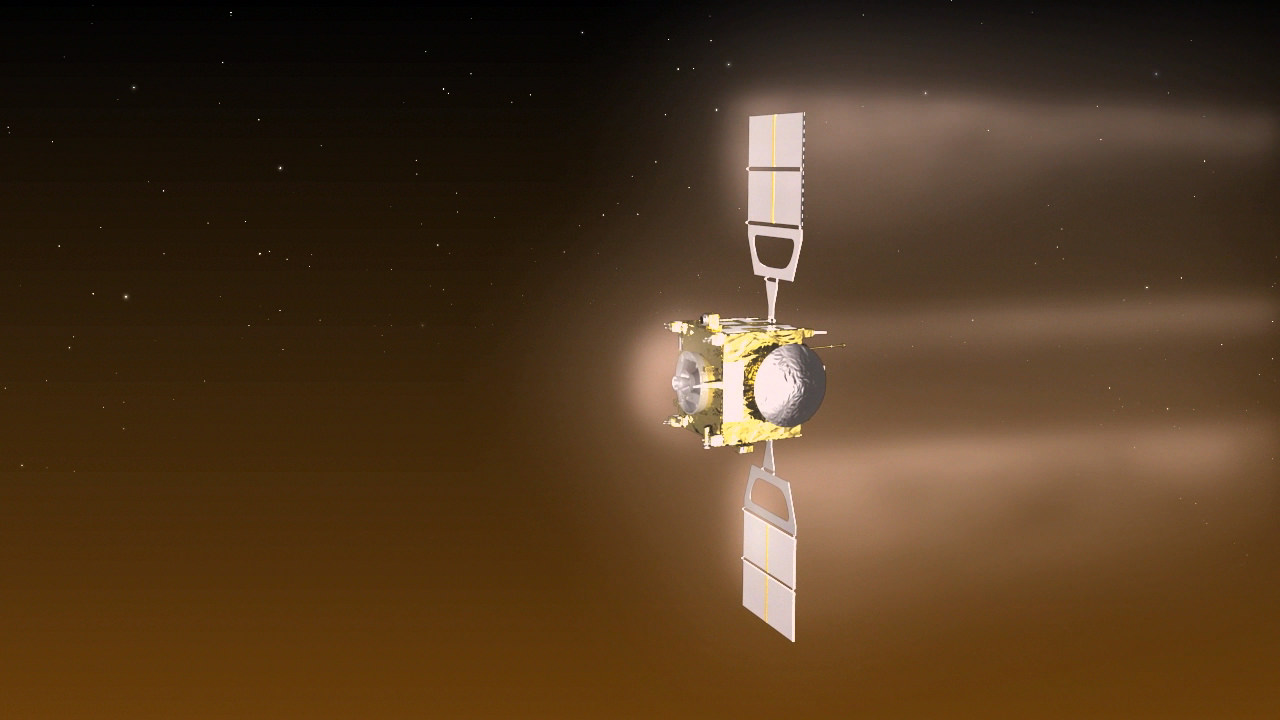It’s been an interesting year for Venus Express. A few months ago, controllers deliberately dipped the spacecraft into the atmosphere of the planet — for science purposes, of course. The daring maneuver was approved because the spacecraft is near the end of its mission. It’s nearly out of fuel and will fall into Venus — sometime. Likely in 2015. No one knows exactly when, however.
Until Dec. 30, European Space Agency operators are going to boost the spacecraft’s orbit to try to get a little more productivity out of it. After that, all depends on what gas is left in the tank.
The push against the dense atmosphere revealed a few surprises. In a recent blog post, ESA said the atmosphere was changing more than expected. Between different altitudes, controllers sometimes saw a steady rise in pressure and sometimes multiple peaks. The spacecraft’s journeys took it as low as 129.2 kilometers (80 miles) above the surface, but mostly involving a month of “surfing” between 131 km and 135 km (81.4 miles and 83.9 miles).

“One possible explanation is that we detected atmospheric waves,” stated Håkan Svedhem, Venus Express project scientist.
“These features can be caused when high speed winds travel over mountain ranges. The waves then propagate upwards. However, such waves have never before been detected at such heights – twice the altitude of the cloud deck that blankets Venus.”
ESA observed that the atmospheric density increased 1,000 times between 165 km and 130 km (102.5 miles and 80.8 miles) and that it also changed when the spacecraft moved from day to night (specifically, it was four times greater on the sunlit side.) Measurements were also taken of high-energy particles and Venus’ magnetic fields, which are still being examined.

But now, the end is indeed near for the spacecraft after eight years at Venus — four times longer than its primary mission. Although it is healthy and performing routine science operations, fuel is only standing at around 3 kilograms (6.6 pounds) and oxidizer at 5 kg (11 lbs). It’s possible not all of it is accessible due to propellant movement in the tanks, ESA said. The new maneuvers are expected to subtract 1.4 kg of fuel and 2 kg of oxidizer from these totals.
“Unfortunately, we do not know how much fuel remains in its tanks, but we are intending to continue the up-down process as long as possible, until the propellant runs out,” Svedhem added.
“We have yet to decide whether we shall simply continue until we lose control, allowing it to enter the atmosphere and burn up naturally, or whether we attempt a controlled descent until it breaks up.”


I would venture to say that because venus doesn’t spin very much the atmosphere doesn’t get smoothed like earth, so a pressure divide would be natural between the dark and night sides. The propagation / diffusion of the pressure drop could easily create waves as they attempt to equalize across the atmosphere.